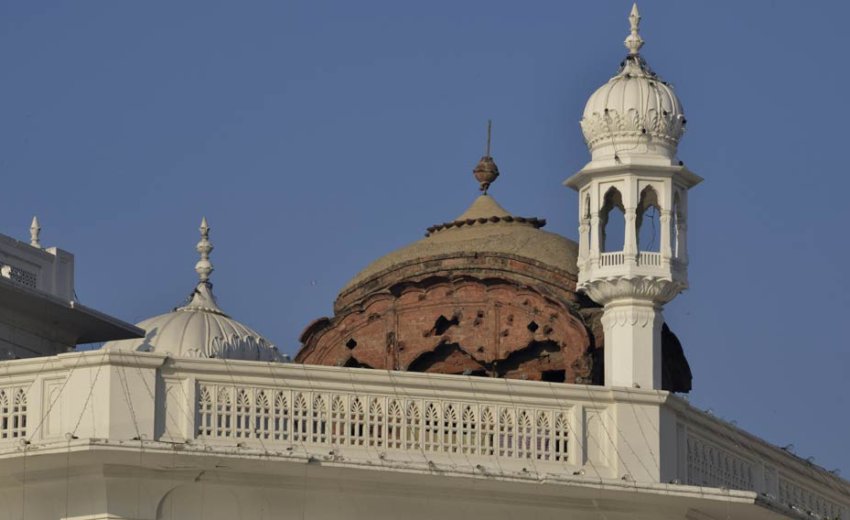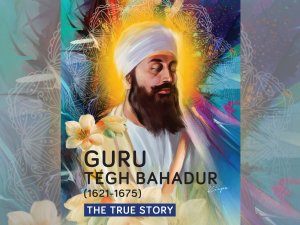Can the Sikhs forget 1984? It is like asking the Jewish people if they can forget the Holocaust. The Holocaust Memorial Day is now the day when the world remembers millions of people murdered under Nazi Persecution and in other genocides. Examples given are Cambodia, Rwanda, Bosnia, and Darfur.
The world should not forget genocides because large scale organised and systematic killings of any people shake the foundations of civilisation. There are good reasons why a people must never forget such episodes in their history. Lessons must be learnt so that history does not repeat itself.
Sikhs too have their blood-stained pages of history. In addition to two historical episodes called Ghalugharas in the 18 th century (holocausts of 1 May 1746 and 5 February 1762), 1984 witnessed the start of the Third Ghalughara, except that it lasted for nearly 10 years after 1984. It started with military action called Operation Blue Star. While it involved the whole of the Punjab State and dozens of historical Gurdwaras, the main military operation was carried out between 1 and 8 June 1984, ostensibly, to remove Sant Jarnail Singh Bhindranwale and his followers from Harmandir Sahib complex in Amritsar. The attack was ordered by Prime Minister Indira Gandhi. Bhindranwale had been invited to the Golden Temple Complex by President of Akali Dal, Harchand Singh Longowal, in July 1982. The Third Ghalughara should be looked at in the context of events leading up to it. One has to look at the root causes.
In September 1973, Bhai Hari Singh Shergill wrote an article in The Sikh Review with the title, In the Republic of India Sikh Case Still a Running Sore. Even after 26 years of independence, the Sikhs of Punjab felt like second class citizens. He wrote, “Punjabi Suba was conceded after huge sacrifices had been made in fight to wrest it, and even then what was grudgingly granted was a truncated, moth-eaten, ghetto type one, in an undignified manner. This ignoble and uncalled for discrimination against the most patriotic people, involving colossal turmoil and torture for them, still rankles deep in their hearts. Of all the people of the region, the Sikhs were in the vanguard of sacrifices. They were betrayed by the Congress, which refused to honour its repeated promise that the Sikhs would be recognised as a politico-cultural entity.”
Ten years later, a few months before Operation Blue Star, a publication of 15 December 1983, had an interesting heading, Hindu-Sikh Conflict in Punjab – Causes & Cure (edited by S M Sathananthan and published by Transatlantic India Times.). This was a report by Dr K T Lalvani (London) and S Raghunath Iyenger (Lagos) following interviews with many key figures in Punjab. It traced back the cause of what would be the pending Third Ghalughara, to the decades old Hindu-Sikh conflict in Punjab.
So, the Sikh case became a running sore following, broken pre-partition promises, Punjabi Hindus disowning own mother tongue, Punjabi Suba morchas forced on the Sikhs, creation of Haryana as yet another Hindi speaking state next to UP, river water injustice, refusal to declare Chandigarh as the capital of Punjab, biased press reporting and even trivial things like naming a road in Punjab as Guru Gobind Singh Marag!
Sikh desire to be treated as an independent politico-cultural entity became conflated with Sikh separatism.
Prime Minister Indra Gandhi had set 3 June 1984 as the date for military invasion of Punjab including Darbar Sahib complex and about 40 historical Gurdwaras. When the army took up positions around Darbar Sahib, Sant Harchand Singh Longowal told someone to inform Sant Bhindranwale, “Tell him that his guests have arrived.” (Tragedy of Punjab by Kuldip Nayar and Khushwant Singh.)\
Earlier, General Brar had addressed his jawans and officers that the “enemy” had links with Pakistan and had captured Darbar Sahib. That the “enemy” wanted to establish Khalistan and that there was a threat to the integrity of India which they had all sworn to uphold. Thus political machinations leading up to Operation Blue Star had portrayed supporters of Anandpur Sahib Resolution as the enemy seeking separation from the country.
A recent question posed by an ex-army officer is as follows, “In his latest interview S. Tarlochan Singh [ex-MP and Minorities Commissioner] mentions that when he accompanied President Zail Singh on his visit to Darbar Sahib on June 8th, 1984, right outside Darbar Sahib there was a board to the effect “Enemy Territory” and inside, captured Sikhs were being detained as “Prisoners of war”…...is this normal for any military force of a country to declare part of their own country as Enemy Territory?”
That is a good question to which no one has offered a satisfactory answer. The main objective of the Congress Party led by Prime Minister Indra Gandhi in 1984 was to win the next General Election. To win over the patriotic Indian voters, the Sikhs had been targeted and portrayed as separatists. It is most remarkable that the most patriotic of all Indian minorities, with a proven track record of loyalty to the country second to none, had
been selected for the pending genocide which would last for more than ten years. We have seen that the Sikh case had become a running sore following, broken pre-partition promises. States were created on the basis of language but not the state of Punjab on the basis of Punjabi language. Instead, next to an existing Hindi speaking state of UP, another Hindi speaking state Haryana was carved out of Punjab. Thus, Chandigarh became the bone of contention between the two states looking for own capitals.
Punjabi Hindus were influenced by Hindutva propaganda of Arya Samaj and right wing Jan Sangh Party (which existed from1951 to 1977). Replying to a question by a journalist in late 1983 about Hindu-Sikh problems, Sant Jarnail Singh Bhindrawale replied that Punjabi Hindus were opposing every Sikh demand made to the Government, be it a demand for holy city or the naming of a train after the Golden Temple, or even naming of a road inside Punjab after Guru Gobind Singh. Yet, Sikhs had always supported Hindu religious causes and never once opposed their religious demands.
And so, political game-playing and manipulations on both sides collided with the sanctity of Ardaas before Akal Takht Sahib, and historians are still picking up the bits and pieces. It is clear that Sikhs cannot and should not forget the Third Ghalughara in Sikh history, if history is not to repeat itself. Truth and re-conciliation is always a possibility. However, that will also require setting the record straight.
Gurmukh Singh
[email protected]






